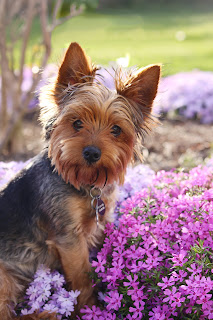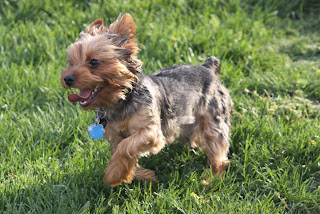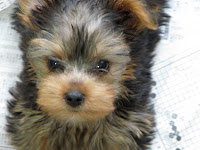 |
| Small Dog Breeds - Yorkies |
 |
| Yorkshire Terrier Dog |
The Yorkshire terriers, or Yorkies, originated from Scotland but bred in England. They were molded to hunt rats, but nowadays they are popular as pets.
They usually grow being small and light varieties. Hence, owners do not mind having their pets on their lap almost all day. Moreover, this usual bonding activity usually transforms this lap dog into a bright, playful, and loyal companion pet.
The following are some of the basic facts breeders would really love to know about Yorkies:
Category: Toy (Terrier)
Living Environment: indoors (highly recommended); outdoors (fenced yard)
Coat: silky, glossy, long and fine; no undercoat
Colors: black when young but they attain the colors tan and blue as they mature
.
Height: between 8 and 9 inches
Weight: between 3 and 7 pounds
Temperament:
Naturally,
• they are territorial and like their privacy to be respected
• they are intelligent and fearless
• they are assertive and independent
When properly trained,
• they develop close affinity with older children
• they become really playful and lively
• they become extremely affectionate
• they do not mind having other pets at home
• they focus much of their attention and affection toward their owner
Breeders should note of the following health issues:
• Alopecia, or losing hair
• Cataract, or loss of transparency of one or both lenses of the eyes
• Cryptorchidism, wherein testicles do not descend into the scrotum
• Dwarfism
• Entropion, a disorder with the eyelid; lashes on the eyelid that irritate the eyeballs could lead to other complications
• Glaucoma, a condition that causes an increase pressure within the eye
• Hydrocephalus
• Keratoconjunctivitis sicca, or the reduction of tear production
• Low blood sugar
• Patellar luxation, a disorder in the kneecap
• Portosystemic shunt, or the accumulation of blood toxins in the liver
• Urolithiasis, an infection of the urinary tract leading to the formation of bladder stones.
Care and Exercise:
• They require daily grooming.
• Ears and eyes must be cleaned and checked regularly.
• Dental hygiene must be regularly maintained.
• They are fit only for short strides.
• They should have a regular play time while lying under the sunbeams, chasing shadows, and joining tug-of-war.
Origin/History:
In the 19th century, a number of weavers from Scotland migrated to England and brought with them different terriers that were bred to hunt rats. Through time, these terriers were crossed and terriers with "broken hairs" were produced.
In 1870, a "broken-haired Scotch terrier" was named as a Yorkshire terrier by a reporter. He argued that the breed should be called as such because his types were bred in a town called Yorkshire.
Though the Yorkies were originally bred as working dogs, they became fashionable pets is England in the latter part of the Victorian era. In 1972, Yorkies were brought to the United States and became the country's favorite pet.
You can say that the Yorkies developed into tough breeds because of their ancestors' reputation as rat-hunters. However, their size, and playful and bright character have actually captured the attention and affection of most pet owners. Most proud owners would boast that they have the great giants inside the bodies of these little dogs. If you want a small but terrible breed of dog, grab a Yorkie now! Just a friendly reminder, they would really need your attention and companionship than any other terriers.
 |
| Ear Drops for Yorkies with Ear Infections |
Control and prevent symptoms of ear infections in Yorkies , dogs & ALL other animals, cats, horses, cows, pigs and more. Remedy for ear problems in yorkies. Find out more about this powerful all natural veterinary ear medicine. Get fast relief for sore ears in pets from http://drdogs247.com






